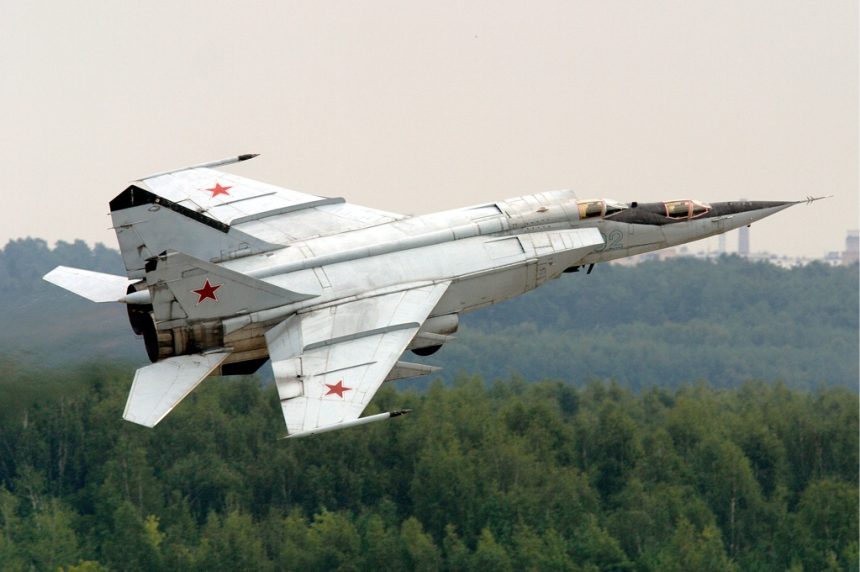The story of Viktor Belenko, a MiG-25 pilot who defected to the United States via Japan on Sept. 6, 1976.
The then Lieutenant Belenko was a pilot with the 513th Fighter Regiment, 11th Air Army, based in Chuguyevka, Primorsky Krai, in the east of the country. When he brought his MiG-25 “Foxbat” to Hakodate he gave the Western intelligence officers the opportunity to give a first close look at one of the most secret airplanes of those years: a supersonic interceptor featuring a powerful radar, four air-to-air missiles and a top speed above Mach 3.
In order to assist the American experts in evaluating the aircraft, Belenko brought with him the pilot’s manual for the MiG-25 “Foxbat”, expecting to assist American pilots in evaluating and testing the aircraft.
Even if the Japanese government didn’t originally give full access to the plane, the Americans were later invited to examine the aircraft extensively: the Mig was dismantled for such purpose and later returned to the Soviet Union.
In his “MiG pilot” book (1983) John Barron claims that Viktor Belenko’s defection was completely voluntary and was the result of Belenko’s distrust on communist regime.
The MiG was delivered to Japan without the missiles, which were to be introduced in the Belenko’s training later on.
The mission was launched earlier than initially planned, because the KGB was about to stop Viktor Ivanovich Belenko from defection.
Although pilot defections during the Cold War were not a rarity, what made Belenko’s defection unique was the fact that the MiG-25 was completely unknown in the West.
This is the main point to bear in mind when thinking about Belenko and, unfortunately, this fact is often forgotten.
The ideological background for the events which took place in 1976 is deeply rooted in the beginnings of the post-war period.
As the Cold War was in progress there were many incidents and crises which closely led to a confrontation of the two superpowers.
One of these events was Francis Gary Powers’ U-2 spy flight on of May 1, 1960.
Power’s U-2 took off from USAF Peshawar Air Base in Pakistan for a GRAND SLAM mission, to investigate the Soviet missile and plutonium production plants.
Targets were Sverdlovsk, Plesetsk (ICBM sites) and Mayak – a plutonium plant.
The U-2 was a plane designed to fly well above the Soviet air defense Surface to Air Missile systems.
Its operational ceiling was out of the range of the Soviet interceptors and missiles but Powers’ flight was expected, all of the units and surface-to-air defenses were put on alert.
The MiGs pilots were ordered to ram the aircraft if necessary. The U-2 was eventually shot down by an S-75 Dvina missile near Degtayrsk in the Ural region. Because of high g-force Powers had no chance of reaching the airplane’s self-destruction button and had to eject.
What is interesting is the fact that SAM crews did not know that the plane had already been shot down because MiG’s’ IFF transponders were not updated (May 1st is a national holiday), therefore several MiG’s were also shot down by S-75 rockets.
The political consequences of the spyflight were severe.
Shortly after the incident the Americans created a cover up story for Powers’ failure. NASA had announced in a very specific press release that the pilot, having lost consciousness due to the problems with the oxygen equipment, had strayed into the Soviet territory with his autopilot engaged while doing a weather flight.
On May 7, Khrushchev announced that Powers has survived the crash and, nine days later, on May 16, 1960, during a Four Powers Paris Summit meeting with Harald MacMillan, Charles de Gaulle and Dwight Eisenhower he called the U-2 incident an act of a “deliberate aggression.”
Eisenhower refused to apologize for the incident, claiming that the U-2 flight was not of aggressive nature, having only a purpose of ensuring US safety. The meeting collapsed.
At the time, Eisenhower was a proponent of so-called Open-Sky Policy, according to which both sides would allow for reciprocal reconnaissance flights over their territories. Khrushchev did not agree. Powers was sentenced to 7 years of hard labor in a Gulag, but he was exchanged for a Russian spy Rudolf Abel on the famous Glinecke Bridge in Potsdam, connecting West and East Germany.
Gary Powers incident sparked the development of the American Oxcart programme, with the goal to design the SR-71 spy plane, which in addition to flying high, also flew very fast, out of the range of the Soviet missiles’ operational envelope.
What is more, a D-21 drone reconnaissance system was created, to be carried by SR-71 as a parasite. The drone would be dropped, fly over the Soviet Union, return over the Pacific and drop the reconnaissance materials on a parachute.
Both these designs led to the development of a Soviet countermeasure – the MiG-25, known in NATO code as the Foxbat.
To be continued…









